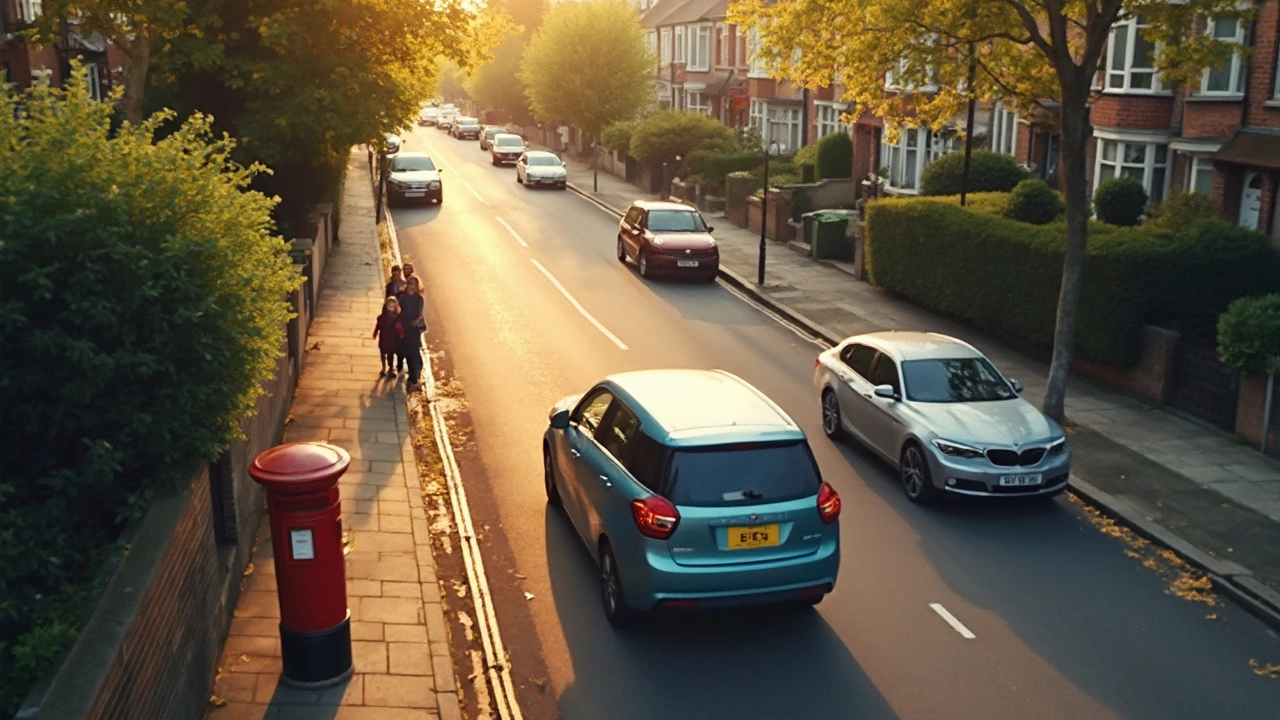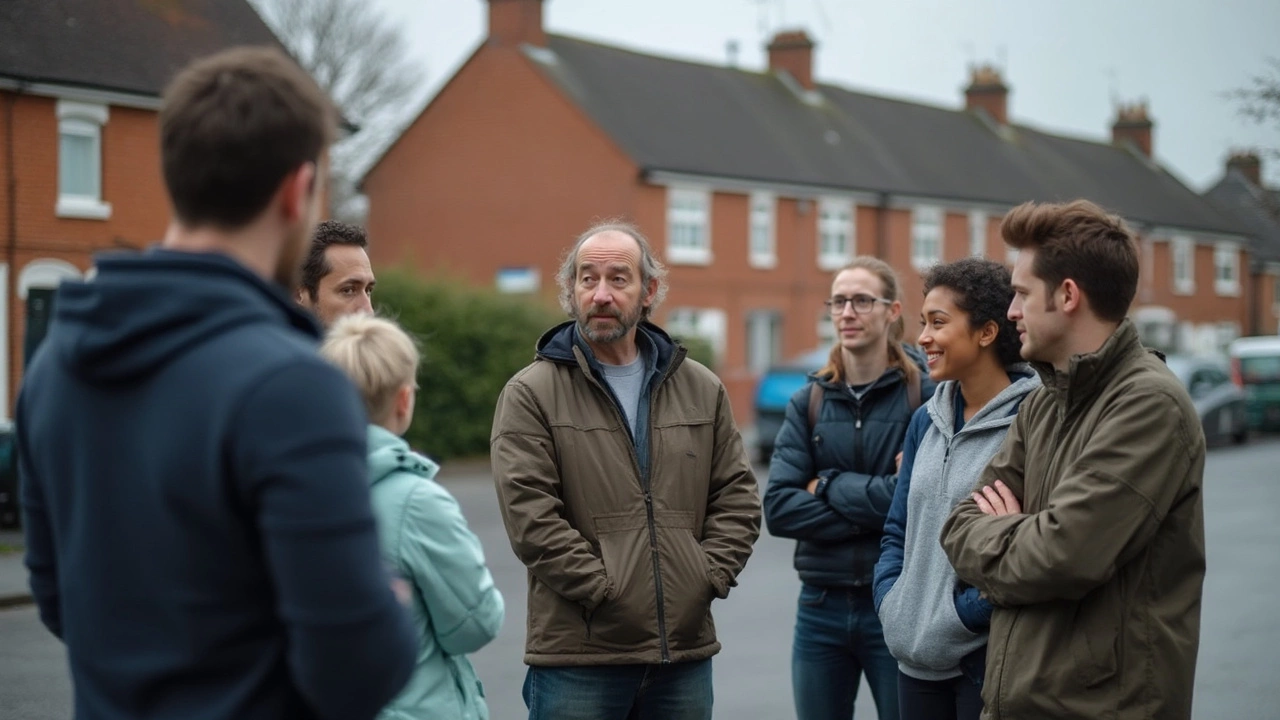You sit in the driver’s seat for the first time. The keys are cold in your hand, your heartbeat thumping louder than the warning beep of your seatbelt. Friends joke about stalling the car or turning on the wipers instead of the indicators—but nobody tells you what matters right now: your mind has to shape up before your hands even touch the steering wheel. Most people think driving is about memorizing the rules or how to use the pedals. The truth? That stuff’s easy. The real first lesson is learning to pay attention. Not the kind of attention where you check your phone every few seconds, but the deep, wide-awake kind where every moving thing and odd sound triggers your senses. Without this, even the best driving skills fall apart.
Mental Preparation: Tuning into the Road
Nobody hops into a car fully ready to handle all the weird, unpredictable things the road throws at you. But the first real skill you need isn’t about gear shifts or hand positions. It’s learning how to be fully alert—and keep your cool when things get hectic. People who zone out on autopilot, even just for a few seconds, are the ones who end up missing stop signs, forgetting which way to look at a junction, or reacting too late to a kid chasing a ball.
So, what does this “alert” feeling actually look like? Picture your eyes scanning ahead, but also darting to the mirrors, checking the speedometer, noting if the engine suddenly sounds different. There’s a technique taught in some top driving schools called “active scanning.” Basically, it’s the opposite of tunnel vision. You’re not just staring straight ahead but taking in everything around you—what’s behind, what pedestrians are doing, and even keeping mental tabs on possible hazards like open car doors or cyclists weaving between traffic.
The best new drivers treat every trip, even that first low-speed loop around a parking lot, as practice for this mindset. And yes, it’s exhausting for the first few weeks. But nothing builds safe driving habits like making this kind of attention second nature. There was an Australian study from Monash University that tracked thousands of new drivers. The ones who’d practiced active awareness from day one were involved in half as many incidents over their first year.
Want to start building it now? Try this before driving: for one minute, wherever you are, notice as many sights and sounds as possible—how many different cars are nearby, what noises you hear in the distance, the way the pavement looks. Do it every day. You’ll be surprised how much easier the real thing feels when you finally hit the road.
The Controls: Get Comfortable with the Basics
Tons of people feel overwhelmed by all the things to remember during their first lesson. Pedals, mirrors, steering wheel, handbrake, gear stick—and that’s before you even think about indicators or wipers. Here’s the trick: don’t try to memorize every switch and dial at once. Focusing on understanding the big three controls—the steering wheel, accelerator, and brake—makes life so much simpler at the start.
The steering wheel is your main connection to the car. Ideally, your grip should be firm (not with white-knuckle tension) at about the “nine and three” position. Car safety experts ditched the old “ten and two” advice years ago, since modern airbags can be dangerous if your hands are too high up. The idea is to keep your arms slightly bent and relaxed. Practicing small turns at low speeds, like in a nearly empty parking lot, builds up that muscle memory so you steer confidently without over-correcting.
Now, the pedals. Cars with automatic transmission have it easy: just brake and gas. If you start on a manual, the clutch comes into play, and that’s where a lot of new drivers mess up. The secret is patience—push the clutch in fully before shifting gears, and feather it out gently as you give the car gas. If you stall or jerk, don’t sweat it. Even experienced drivers sometimes stall a manual.
Braking deserves real respect. Smooth stops, not sudden jerks, are the sign of someone who's going to be a safe driver. Imagine you have a sleeping kitten on your dashboard… yes, weird, but it works. If the imaginary kitten doesn’t roll off as you slow down, you’re braking just right. Most car crashes with new drivers don’t happen because they speed—it’s because they panic-brake, lose control, or don’t stop soon enough.
Mirrors and indicators matter, for sure. But in the first few lessons, just be sure you understand how to adjust each mirror for your height and position. You don’t want giant blind spots. The controls for wipers, lights, and the horn can wait until after you’re solid with the basics. One step at a time keeps things manageable.

The Rules of the Road: Know Your Environment
Remember how you felt walking into a new school or job? You had no idea where anything was, so every turn felt risky. It’s the same with roads. Before you even leave the driveway, a basic sense of the rules and signs cuts the confusion in half. Weirdly, the stuff that stumps most new drivers isn’t the big rules like speed limits or stopping at red lights. It’s things like right of way at a four-way stop or deciphering all the different road markings. Mess these up, and you’ll get honked at (or worse) before you ever break the speed limit.
Pay extra attention to yield signs and merge lanes—those are where most rookie mistakes happen. Headed onto a main road from a slip road? Your job is to match speed and merge in smoothly, not stop and block traffic. On the other hand, if you see a zebra crossing ahead, slow down and look for people trying to cross. Many new drivers get ticketed because they miss a sign, not because they were trying to break rules.
Don’t be afraid to ask questions if a sign or marking confuses you. Snapping a photo on your phone (when parked, obviously) and looking it up later is a smart move. There are fantastic apps made just for new drivers to help you recognize every sign and situation out there. And if your local area has roundabouts, practice those with your instructor until you’re comfortable—they’re tricky for everyone at first.
One last thing here—keep your phone on silent and out of reach. Just a few glances down can mean missing an emergency vehicle, a sudden lane change, or a crossing pedestrian. If you’re using your phone for music or navigation, set it up before you start moving. Remember, you want your focus completely on the environment out the windshield.
Building Safe Habits for Life
Once you get a grip on the basics, the real challenge is turning them into habits so you don’t have to overthink every move. Ever watch a pro parallel park? It looks effortless—not because it’s easy, but because muscle memory takes over. That’s your goal. Repetition is your best friend here.
Experts recommend practicing the same short routes over and over at first. Drive around the same neighborhood blocks. Do the same left and right turns until they’re boring. Don’t rush to jam through every skill—slow, focused practice beats hectic, unfocused miles every time. After a few weeks, things that felt awkward (checking mirrors, easing onto the brake, signaling at a turn) will become second nature. Muscle memory frees up your brain to handle new situations.
Here’s a pro tip: narrate your moves out loud when you’re alone. “Turning left, checking mirror, keeping speed at 20.” This might seem silly but saying your decisions helps wire them into automatic behavior. Even some veteran police drivers use this trick when learning a new route or vehicle.
Never get complacent, though. Top instructors talk about “the comfort trap”—after a few months, most new drivers relax so much that they start missing hazards or taking dumb shortcuts. Try to stay sharp: once a week, have a parent, friend, or instructor give you a gentle critique. They’ll catch little bad habits (rolling stops, weak signals, adjusting the radio while moving) before they get locked in.
Once those safe driving habits are baked in, real confidence grows. Not the cocky kind, but the self-assurance that you can handle new roads, heavier traffic, or the weirdest weather. It’s a life skill that pays off every single time you’re on the road.

What to Expect During Your First Real Drive
The big moment—your first actual drive on a street that isn’t empty. This isn’t a TV show. You won’t nail it all instantly, and nobody expects you to. Most first drives are loaded with nerves, awkward gear changes, maybe a passenger who looks more scared than you are. That’s totally normal. Deep breath.
Before you start, do a quick walkaround of the car. Check the tires, look for anything weird hanging from the underbody, make sure your windows and mirrors are clean. Most driving instructors rate this as essential, but it’s easy to skip when you’re in a rush.
When you’re inside, get comfy. Adjust your seat until you can reach the pedals without stretching. Set your mirrors so you can see as much of the road around and behind you as possible. Buckle up, turn your phone off, and get familiar with where the basics are—the horn, the indicators, the lights. If you’re in a manual, double-check what gear you’re in before starting.
Once you’re rolling, start with super simple moves. Go straight for a bit, brake gently, practice a few turns at low speed, then pull over and pause. Feeling anxious? Say it out loud. Even pro racers feel jitters before their first laps; what matters is getting used to the feeling and knowing it will fade with experience. If stuff goes wrong (and it will sometimes), treat each mistake as a lesson, not a disaster.
After your first outing, jot down how it felt. What was hard? What went easier than you expected? Talk to your instructor or family about any sticky parts. Every drive after the first gets a little bit easier, a little more natural. Before you know it, you’ll be smiling at those awkward early days from your rearview mirror, wondering why you ever thought driving was such a big deal in the first place.

